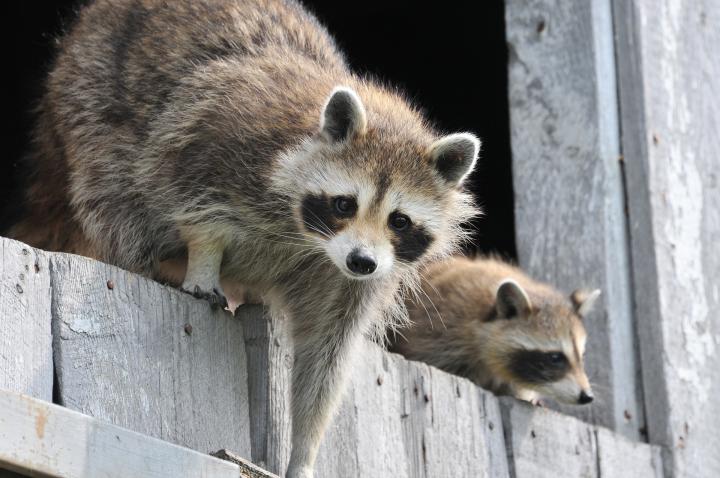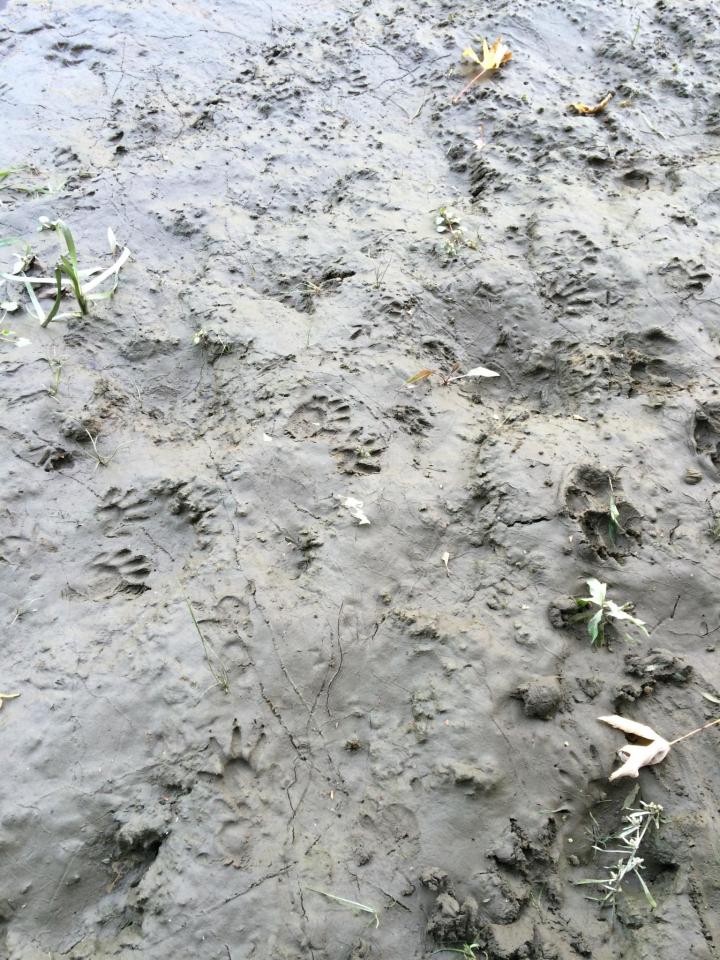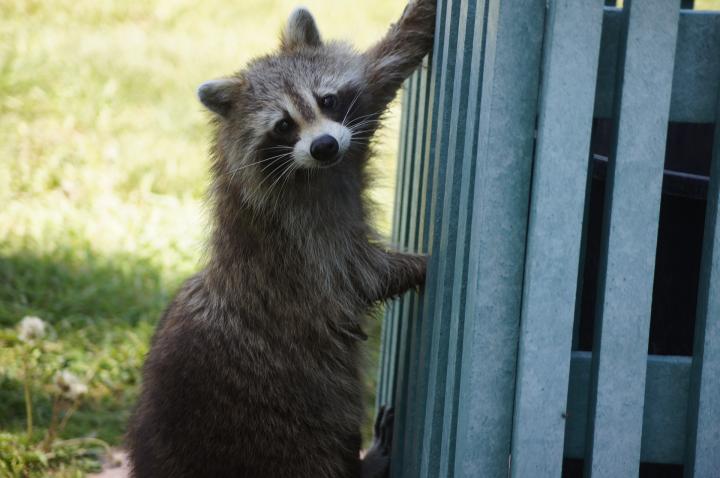






Here are some tips for how to identify raccoons and how to get rid of a raccoon.
Raccoons (procyon lotor) have masks over their eyes because they could rob a truck. These resourceful animals are second in persistence and imagination to no animal, unless it is a squirrel at a bird feeder.
Raccoons are great climbers, swimmers, jumpers, and runners. Their five-toed paws make them very dexterous, and their agility can allow them to outsmart every human concoction used to deter them. If they aren’t breaking into your garden, they might try to climb into your chimney to use it as a den.
Raccoons do not hibernate during the winter, but they will live in dens for periods of severe weather, causing them to lose a lot of their body fat in northern areas. They often live in hollow trees during the warm part of the year. Populations of raccoons often include many youngsters, and families will stay together for about a year.
Even though wild raccoons prefer areas with trees and a source of water, more and more of them are raiding gardens because gardens are an easy source of food. They’ll be even happier if you have a source of water and some forest near your garden. Raccoons are omnivorous, but they’re happy to eat all the plants that you have growing.
Raccoons are small mammals 2 to 3 feet in length and weighing about 10 to 30 pounds. Raccoons have distinct black “masks” on their faces, which often characterizes them as bandits. They have fluffy, ringed tails. Their bodies are varying shades of gray. The forepaws of raccoons resemble tiny human hands with five toes, which makes raccoons very dexterous.
Raccoons are nocturnal creatures, meaning that they feed at night. This might make it hard for you to identify them, as you might only see the damage they cause. Looking for raccoon tracks near the damage might also help you to identify them.
What do raccoons eat? Raccoons are nocturnal feeders that eat your sweet corn, though they also eat fruit trees, peas, potatoes, and grubs.

If your lawn has a lot of holes in it, or your mulch pile has a lot of holes, you probably have a nightly visitor. Raccoons will dig up lawns and mulch piles looking for insects to eat. They will also empty bird feeders, so keep an eye on your feeders to see if you have a raccoon problem.
Of course, if you have corn, there’s nothing more infuriating than finding stalks toppled and ears ripped open and half eaten. (Even more frustrating is the idea, offered by animal researchers, that raccoons are wasteful because they don’t really like sweet corn all that much; in fact, they seem to prefer sunflower seeds, dog food, and sardines.)
The persistence and proliferation of raccoons has inspired many solutions; one of them is bound to work for you. Here are tips from all our readers and staff! See what works for you.

Do you have any more tips for getting rid of a raccoon? Let us know below!
Copyright © www.100flowers.win Botanic Garden All Rights Reserved